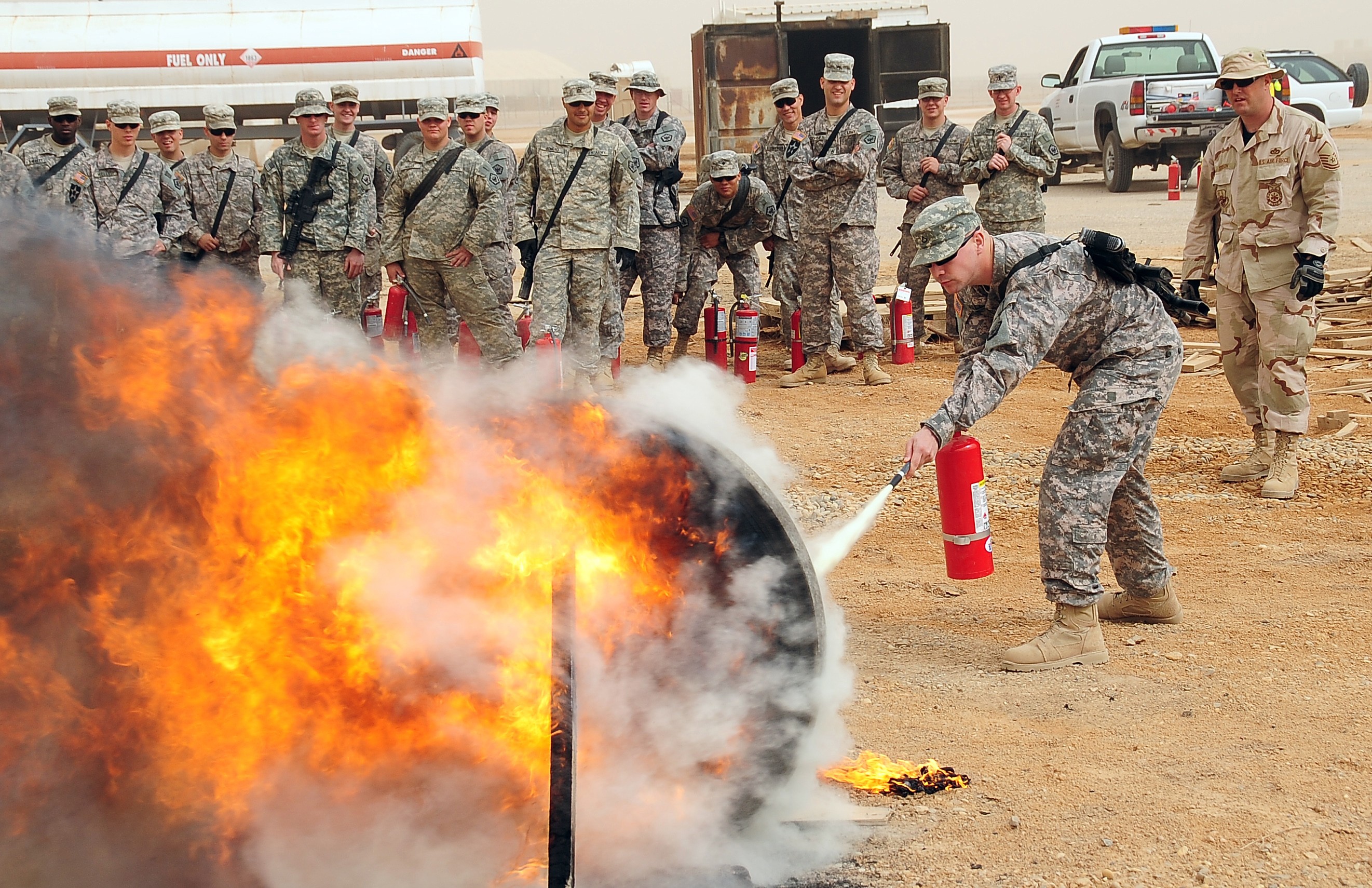
ALI BASE, Iraq - Members of the 407th Expeditionary Civil Engineer Squadron Fire Department conducted fire safety training for Soldiers assigned to the 3rd Platoon, 570th Sapper Company, 14th Engineer Battalion, 555th Engineer Brigade, Feb. 15.
The 57th Sapper Company is tasked with conducting routine clearance patrols throughout the Maysan and Dhi Qar provinces on a daily basis.
According to Army Capt. James Douglas, 570th Sapper Company commander, there have been several incidents where tires have caught fire on mine-resistant ambush-protected vehicles, causing massive amounts of damage while outside the wire. One example is when an MRAP tire caught on fire causing $1 million in damages. The crew used five dry chemical extinguishers to suppress the fire but wasn't successful in saving the vehicle.
"Soldiers come across just about anything out in the field," said Master Sgt. Lloyd Stinson, 407th ECES Fire Department. "When a fire breaks out, it's up to the crews to identify and take immediate action. As with any fire, the people, mission and property are in jeopardy. This training provides an understanding of the system and enables confidence in the equipment knowing it will do the job it was meant to."
The training showed Soldiers how to identify, safely control and extinguish tire fires on MRAP vehicles. The unit also received hands-on training with the dry chemical extinguisher and the compressed air foam (CAF) extinguishing system and how to inspect their vehicle and living area fire extinguishers.
According to Stinson, the dry chemical extinguisher disrupts the combustion reaction of a fire when sprayed on the flames. This system works best on liquid fuels, because it is the vapors of the fuel that ignite; however, the tire is exposed to oxygen again, which can cause the possibility of flames re-igniting. The compressed air foam system uses the method of oxygen exclusion to suppress the fire, which basically starves the fire of oxygen. The system has an adhesive characteristic that makes the foam mixture stick to the tire. When applied correctly, the foam will stay on the tire for several minutes depending on the temperature reached, decreasing the chance of re-ignition.
"The new CAF system provides an awesome punch for a small package," Stinson said. "This system is going to save lives, assets and allow the mission to continue. I hope they never have to use it. But if they do, they know the CAF system will come through."
The fire department plans to offer more training sessions to Soldiers as often as they need it.
The training was very impressive," said Army Spc. Jon Wallace, a 3rd Platoon Soldier. "I was asked to put out a blazing tire fire, so I grabbed my fire extinguisher and went through the procedures I was taught. I was really amazed at how fast I was able to put the fire out."

Social Sharing